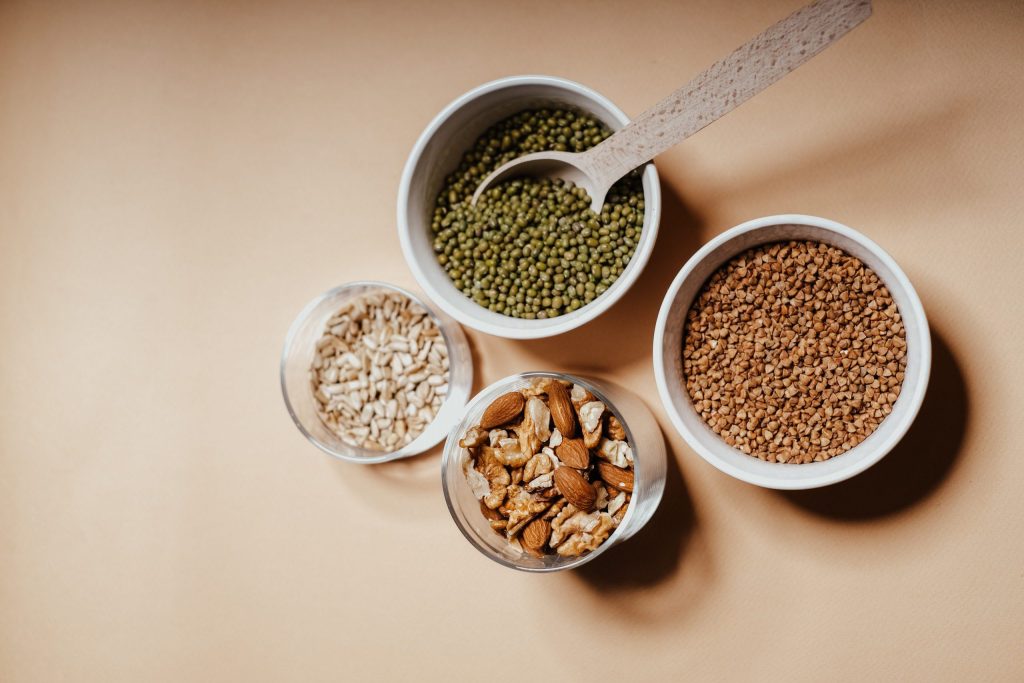Hello and welcome to the Stepwise Enhanced Blog Post Series. In this series we will explore a number of nutrition topics with the simple goal of providing you with more information. This series is meant to be an educational supplement to your current Enara program as we will dive deeper into topics than a traditional appointment window may allow. The second installment is an exploration of my very favorite nutrition topic: protein.
It is not a novel concept that protein is important. You’ve probably heard as much during your time with Enara. Allow me to double down on the concept. Getting enough protein is essential for maintaining your muscle mass, especially during weight loss and through the process of aging. Many negative consequences may result from routinely not getting enough protein. Prolonged inadequate intake can contribute to a litany of consequences such as functional decline, negative impact on quality of life, and failure to support adaptation and recovery from exercise. Also, suboptimal intake during weight loss can negatively impact body composition and functional performance (1). If you are attempting to gain muscle, protein is also very important for that as well.
So you get that it’s important, but where does it come from? The first thing that may come to mind when thinking about sources may be eggs, meat, chicken, and fish. While these are certainly proteins, do we need to eat these for every meal? For every snack? What about vegetarians? It may work to rely predominantly on these sources but it is not very realistic, cost effective, or for that matter very exciting. It also obviously would not work for those who are vegetarian. Not even close. So where else can you turn with the stakes of importance so drastically high? Don’t worry, this post has you covered. We will explore plant-based protein sources and the concept of complete proteins.
Wait, what’s a complete protein? Well, I’m glad you asked.
Complete Protein
Proteins are made up of amino acids. There are 20 of them and of these, 9 are considered essential, meaning our bodies cannot make them. Without this ability to produce them we are reliant, dependent even, on outside sources. We need them from food. The term complete protein refers to proteins that have adequate amounts of these 9 essential amino acids (EAAs) all on their own.
These are the stand-alone complete protein sources:
- Dairy
- Poultry
- Beef
- Seafood
- Eggs
- Soy (Tofu/ Tempeh/ Edamame)
- Quinoa
- Amaranth
- Buckwheat
- Hemp seed
The quality of the protein is determined by the essential amino acid content. The higher the content, the better the quality. All those listed above are complete proteins with adequate levels of each essential amino acid. If a protein were to be inadequate in one or more EAA those would be the missing links, or more officially, the limiting factors. An inadequate level of any of the 9 EAAs makes the protein incomplete and is therefore considered low quality.
EAA content is unfortunately not the only way to look at it. The proteins above are not all equal. How easy that would have been! The digestibility of the protein is also a factor. In other words, how effectively can our bodies use that protein after consuming it? Our bodies cannot use each the same due to a variety of factors in the foods themselves. For animal sources, and soy, the availability after consumption is higher (>90% digestibility) than for plant-based sources. We cannot use proteins with lower digestibility as efficiently and therefore require more of it to get what we need. The digestibility of plant-based proteins varies by source and is also dependent on the level of processing (2).
Let’s take a brief dive into the waters of what happens after we eat proteins, or maybe we will just dip a toe in.
After a protein is eaten and digested it is broken down into its amino acid components. These then make up a pool of amino acids in the body where the concentration available to muscle translates to the body’s ability to maintain or grow the muscle. It is these essential amino acid dense foods which are key in supporting muscle growth (3).
It has been well established in research that animal based proteins are superior to plant-based in terms of both how the body can use them and the quality of the protein. That is not to say that a diet relying on plant based proteins is doomed and without feasible protein options. Rather, those relying on plant based proteins simply need more protein in their diet. They also need a strategic approach to intake to ensure they are consuming the essential amino acids their bodies and muscles need. This is key. A focus on planning and strategy here is crucial. Also, and fortunately, the earth maintains plant-based combinations where complete proteins can be made. They are feasible as well in terms of palatability and recipe construction. Here are pairings that work:
Complete Protein Pairings – Examples
Whole Grain + Bean/ Legume
- Beans + Whole Wheat Tortilla
- Beans + Farro
- Hummus + Whole Grain Pita
- Peanut Butter + Whole Wheat Toast
- Barley + Lentil Soup
- Brown Rice + Peas
Legume + Nuts/ Seeds
- Chickpeas + Sunflower Seeds
- Lentils + Almonds
A logical question at this point is do I need to use these complementary ingredients at each meal? Again, thanks for the question. The short answer is no. Referring back to that EAA pool I mentioned earlier, the body can use what is available. Research is mixed on exactly how long EAA’s remain available in the body but a feasible approach is to aim for a balanced intake throughout the day, hitting each category listed above.
To conclude, consuming a balanced diet with each food group should be adequate to get those EAAs in. When you can make a complete protein at a meal, your muscles certainly would not complain. It’s also good to keep in mind that protein sources such as eggs, dairy, meat, fish, poultry, and soy, are more easily used by the body than most plant based sources.
Ok, one last time for good measure, protein is important! Make sure you are getting enough!
- Gwin JA, Carbone JW, Rodriguez NR, et al. Physiological limitations of protein foods ounce equivalents and the underappreciated role of essential amino acid density in healthy dietary patterns. The Journal of Nutrition. 2021; https://doi.org/10.1093/jn/nxab262; accessed October 5th, 2021.
- Van Vliet S, Burd NA, van Loon LJC. The skeletal muscle anabolic response to plant- versus animal- based protein consumption. The Journal of Nutrition. 2015; 145(9): 1981-1991. https://doi.org/10.3945/jn.114.204305; accessed October 5th, 2021.
- Jager R, Kerksick CM, Campbell BI, et al. International society of sports nutrition position stand: protein and exercise. ISSN. 2017; 14(20); https://jissn.biomedcentral.com/articles/10.1186/s12970-017-0177-8; accessed September 13, 2021.



